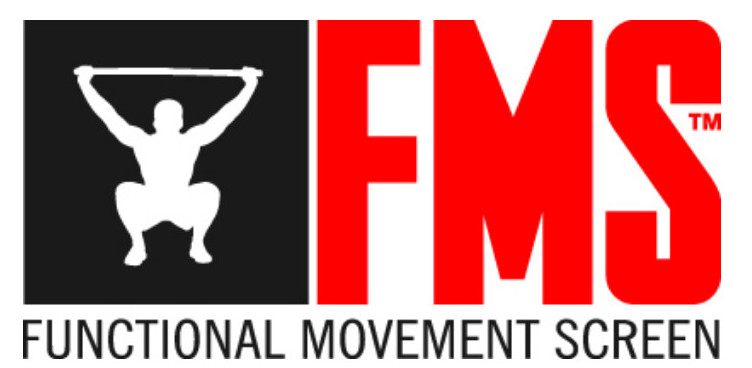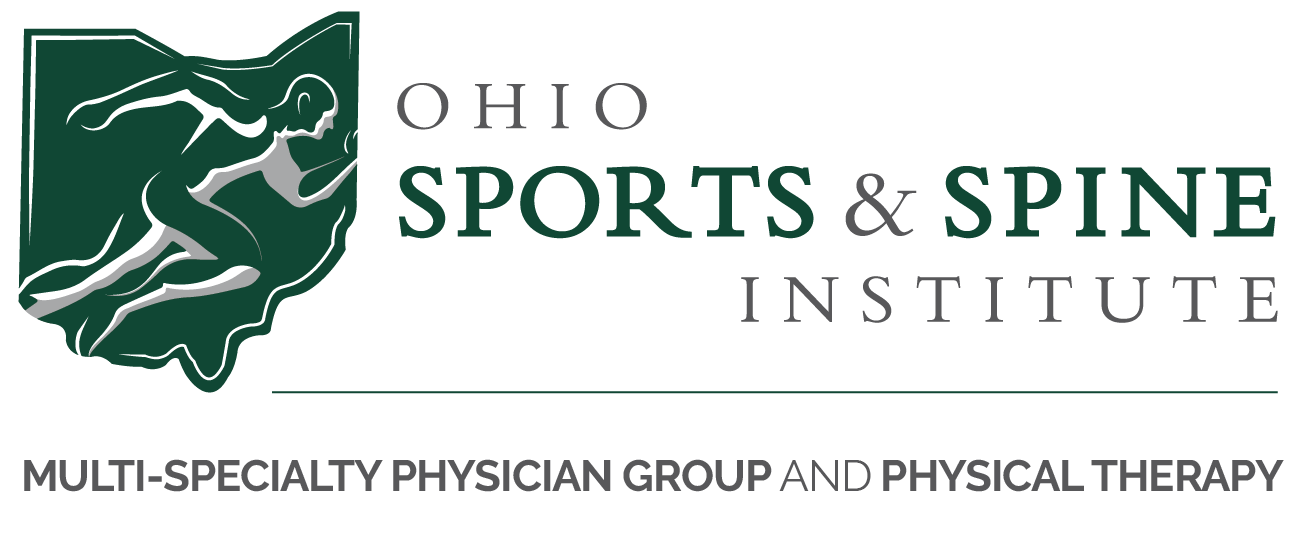Physical Therapy
Physical Therapists are specialists who treat neuro and musculoskeletal conditions, injuries, and post-surgical impairments with the goal of reducing pain and restoring function.
At Ohio Sports & Spine Institute, there’s no one-size-fits-all therapy protocol or plan.
Every physical therapy patient goes through a comprehensive evaluation and gets an individualized patient-centered treatment using evidence-based rehabilitation. We use multiple assessments to choose your therapy program which will include active rehabilitation, manual therapy, and therapeutic modalities and/or taping techniques to help you progress as tolerated to reach your goals.
Physical therapy plays a vital role in recovery from an injury or health condition. Physical therapists are specialists who treat musculoskeletal problems with the goal of reducing pain and restoring function. This may be applicable before or after surgery. Often, physical therapy is used in conjunction with medications and/or osteopathic or chiropractic manipulative therapy.
To recover from an injury, there’s no one-size-fits-all option. That’s why our licensed therapists and physicians develop a customized care plan for each patient whether they’re rehabbing after ACL, hip or shoulder surgery or recovering from a stroke or workplace injury.
We strive to help each patient to achieve their highest potential. Our staff includes licensed therapists, PT assistants, athletic trainers, a licensed massage therapist and a speech pathologist. Your rehabilitation will use state-of-the-art equipment and a variety of low and high-tech equipment to treat pain and inflammation.
Active Rehabilitation
Active Rehabilitation is an exercise-based program designed to improve your level of function.
Active Rehabilitation involves regaining strength, endurance, flexibility, and functional ability through exercise.
Active Rehabilitation is tailored to the patient’s unique needs. Patient’s will be progressed as tolerated through the phases of active rehabilitation.

The McKenzie Method® of Mechanical Diagnosis and Therapy ® (MDT)
The McKenzie Method of MDT is a comprehensive assessment and management approach based on sound and logical principles that focuses on the patient and their potential to self-manage and recover to their previous level of function. It is a reliable and repeatable assessment process intended for all musculoskeletal problems, including pain in the back, neck, and extremities. MDT is a system encompassing assessment, diagnosis and treatment of the spine and extremities. The aims of therapy are to centralize symptoms based on a patient’s direction of preference with the ultimate goal of complete recovery of pain. Exercises and manual therapy provided will be decided by our Doctors and Therapists based on the MDT exam.
Selective Functional Movement Assessment (SFMA)
SFMA is a movement based diagnostic system that systematically finds the cause of pain, not just the source, by logically breaking down dysfunctional movement patterns in a structured, repeatable assessment. SFMA addresses mobility and motor control problems that are causing pain. Exercises and manual therapy provided will be decided by our Doctors and Therapists based on the SFMA exam.


Functional Movement Screen (FMS)
FMS is used to analyze movement patterns and observe mobility and stability deficits. The purpose of a movement screen is to help identify any limitations or asymmetries that may increase your risk of injury. FMS targets movement as it relates to exercise, recreation, fitness, and athletics. FMS is not intended for those with current pain.
Y Balance Test (YBT)
The Y Balance Test measures and quantifies a patient’s motor control and functional symmetry. YBT tests how the core and each extremity functions under body weight loads.
Champion Performance Therapy
A simple yet comprehensive system founded on the principle that movement is medicine. It aims to help people restore, optimize, and enhance performance by perfecting movement, mobility, control, and load capacity.
Functional Retraining
Functional Retraining involves use of multiple muscle groups and movement patterns to restore normal physiological motion, with goals of restoring safe mobility.
Neurological Rehabilitation
Neurological rehabilitation is designed for people with diseases, injuries, or disorders of the nervous system, such as strokes, spinal cord injuries, brain trauma, and degenerative disorders (Parkinson’s, multiple sclerosis, etc). Specific to the patient’s condition, a comprehensive program is created to facilitate nerve healing, improve motor function, and reduce disability.
MOTIONGUIDANCE Laser Biofeedback
Laser biofeedback can be worn around any body part including the head, chest, core, or extremities. It is used for patient biofeedback to correct dysfunctional movement during all forms of movement and is used to show compensations occurring during movements like lunging and squatting.
Active Strengthening and Core Stability Programs
The core is the center of our body and functions to stabilize the trunk while the arms and legs move during functional movements. The core includes muscles that stabilize the hips, shoulders, and torso. Core stability training will be progressed as tolerated from unloaded table exercises to loaded exercises.
More Types of Active Rehabilitation:
Correcting posture will help alleviate abnormal joint and muscles stresses, optimize pain reduction, and prevent recurrent pain. Our team also provides you with home and work ergonomic advice.
Our Doctors and Therapists perform gait and running assessments when needed or requested.
Falls are one of the most detrimental concerns for older adults. A fall risk assessment can determine whether someone has a high propensity to falling which can lead to other health-related issues, including fractures or physical decline.
Improving mobility and flexibility of joints and soft tissue structures leading to increased function.
Vestibular Rehabilitation includes screening of the vestibular, ocular, cervical and balance systems to determine origin of symptoms. Vestibular therapy may include treatment of the cervical structures, ocular retraining, repositioning of otolithic crystals, or use of accommodation exercises to restore vestibular functioning.
Blood flow restriction training is the intermittent and partial restriction of blood flow using a blood pressure cuff while performing low-load exercises to enhance muscle hypertrophy, strength, and recovery. This allows patients to improve both muscle size and strength without heavy lifting.
Nerve gliding exercises encourage the nerves to glide normally as you move your joints and extremities. A nerve may not glide well if it is injured or inflamed, as it can get entrapped in the surrounding soft tissue. Therefore, nerve gliding exercises are often used post-surgery or as part of a rehabilitation program from an injury. Most common nerve glide exercises include the median nerve, ulnar nerve, and the sciatic nerve.
Patient specific exercises are used to improve the body’s balance system from your head to your feet. Screening may include the vestibular system, strength, and coordination. Often used are balance boards and unlevel surfaces to stimulate neuromuscular pathways.
Manual Therapies
Manual therapy is defined as a clinical approach utilizing specific hands-on techniques, including but not limited to manipulation/mobilization, used by the physical therapist to diagnose and treat soft tissues and joint structures for the purpose of modulating pain; increasing range of motion (ROM); reducing or eliminating soft tissue inflammation; inducing relaxation; improving contractile and non-contractile tissue repair, extensibility, and/or stability; facilitating movement; and improving function.
Myofascial Release
Myofascial Release is a light to moderate pressure tissue mobilization performed to the affected tissue or muscle with goals of reducing muscle tension and improving blood flow.
Instrumented Assisted Soft Tissue Mobilization (IASTM)
The use of metal tools for manual therapy designed for specific areas of the body to improve tissue mobility and reduce tissue muscular and fascial adhesions and restrictions.
Extremity & Spinal Joint Mobilizations
Mobilizations increase joint mobility with the goal of reducing stiffness and pain and increasing range of motion and function in joints. There are several different types of mobilizations including, Mulligan, McKenzie and Maitland.
Dry Needling
Dry Needling treats trigger points and myofascial tension. Trigger points are commonly known as “knots” or areas of soft tissue restrictions that are tender to touch and cause referred pain. A very thin needle is inserted into the skin to release tight muscle bands and decrease associated myofascial pain.
Cupping Therapy
Also known as Myofascial Decompression, cupping is a form of soft tissue mobilization that creates suction on the skin using a silicone or plastic cup. Cupping is one of the only treatments that works to lift the skin rather than apply deep pressure. This allows for increased blood flow where the cups are applied which decreases muscle tightness leading to a decrease in overall pain. There are three different types of cupping: stationary cupping, slide cupping, and active movement cupping.
Percussion Therapy
Percussion Therapy involves using a handheld device to target specific areas with gentle pulses of pressure. The various pulses of pressure decrease muscle tension and soft tissue restrictions, increase blood flow, which improves tissue mobility and decreases pain.
Trigger Point Therapy/Ischemic Release
Manual massage and ischemic pressure to areas with active and latent trigger points with a goal of decreasing muscle tension and referred pain while improving overall mobility.
Pin & Stretch Active Release Technique
Targets specific muscles, tendons, ligaments, connective tissues, and nerves to break up muscular adhesions and restore normal range of motion. This technique requires the patient to actively move the specific body part while the therapist applies pressure to the targeted tissue.
Muscle Energy Technique
Muscle Energy Technique involves active engagement of muscles to improve joint mobility, range of motion and alignment to treat pain or structural imbalances. Muscle Energy Therapy includes a wide class of techniques, including Post Isometric Relaxation (PIR), Post Facilitation Stretch (PFS) and Reciprocal Inhibition.
Therapeutic Passive Modalities and Taping Techniques
Kinesiology Taping/ Fascial Movement Taping
A therapeutic taping technique that facilitates stability and joint proprioception, alleviates pain, and facilitates lymphatic drainage by microscopically lifting the skin. This lifting affect forms convolutions in the skin increasing interstitial space and allowing for decreased inflammation in affected areas.
McConnell Taping
A therapeutic taping method applying a firm and rigid but elastic breathable tape used to improve stability and joint mechanics. It can be applied and worn for extended periods with continued therapeutic benefit between therapy visits. It is diagnostic and therapeutic. It is most commonly used in the knee patellofemoral joint.
Passive Therapeutic Modalities
Physical passive modalities are a form of thermal, electrical, or mechanical energy that causes a physiological change to facilitate pain relief, improve circulation, and/or decrease inflammation. These include therapeutic ultrasound, laser therapy, Transcutaneous Electrical Nerve Stimulation (TENS) , Interferential Current Therapy (IFC), heat and/or cryotherapy.
Therapeutic Ultrasound
Laser Therapy
Transcutaneous Electrical Nerve Stimulation (TENS) or Interferential Current (IFC)
Cervical Spinal Traction
Cervical traction is used to provide symptomatic relief for a variety of cervical conditions. It relieves pain by opening up the cervical foramen to reduce pressure on compressed or irritated nerve roots exiting the spinal canal. Traction can either be applied manually or by spinal traction devices.
Your Road to Recovery Begins
About Your Therapy Appointment
The number of physical therapy visits will vary dependent upon your condition or injury as well as severity of the problem being treated.
You will be given a home exercise program to complete throughout your therapy progression while actively in physical therapy.
You will be given a progressive home exercise program when discharged from physical therapy on your last visit.
Your Road to Recovery Begins
About Your Therapy Appointment
The number of physical therapy treatments will vary with the type and severity of the problem being treated. Generally, you will be given a home program to complete during and after discharge from your physical therapy care.
- The length of rehabilitation will vary depending on when therapy is initiated, the severity of symptoms and your specific goals for rehabilitation. Therapy services are often coordinated with any ongoing medical treatment prescribed by your physician. A typical frequency may be one to three times per week and could last for several weeks or a few months in order to maximize progress and functional outcomes.
Schedule an Appointment
Get started with a consultation to evaluate the source of your pain and the best course of action to alleviate that discomfort


